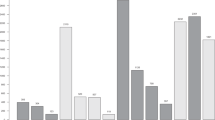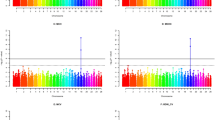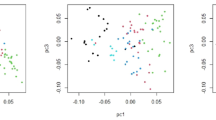Abstract
HARRIS and Warren1 first reported haemoglobin (Hb) polymorphism in sheep; they separated a fast moving Hb A, and a slower moving Hb B, which were controlled by a single pair of alleles yielding three phenotypes—AA, BB and AB (ref 2). Several investigators have subsequently reported on the influence of Hb type on the reproductive performance of sheep. Evans and Turner3 found that Merino ewes of Hb types BB and AB were more fertile and had a greater proportion of multiple births than AA ewes; subsequent investigations have confirmed this observation4. In a study of Australian Merino ewes grazing oestrogenic clover pastures Obst et al.5 reported that AA and BB ewes were significantly more fertile than BB animals, suggesting that the A gene is associated with some factor which protects against the deleterious effects of plant oestrogens. We report observations in Indian Bikaneri ewes and suggest an association between Hb type and the ovarian response to exogenous gonadotrophins.
This is a preview of subscription content, access via your institution
Access options
Subscribe to this journal
Receive 51 print issues and online access
$199.00 per year
only $3.90 per issue
Buy this article
- Purchase on Springer Link
- Instant access to full article PDF
Prices may be subject to local taxes which are calculated during checkout
Similar content being viewed by others
References
Harris, H., and Warren, F. L., Biochem. J., 60, 29 (1955).
Evans, J. V., King, J. W. B., Cohen, B. L., Harris, H., and Warren, F. L., Nature, 178, 849 (1956).
Evans, J. V., and Turner, H. N., Nature, 207, 1396 (1965).
Seth, O. N., Curr. Sci., 37, 231 (1968).
Obst, J. M., Seamark, R. F., and McGowan, C. J., Nature, 232, 497 (1971).
Fowler, R. E., and Edwards, R. G., J. Endocr., 15, 374 (1957).
Nalbandov, N. V., in Reproductive Physiology, second ed., 76 (Freeman, W. H., San Francisco).
McLaren, A., J. Endocr., 25, 137 (1962).
Land, R. B., and Falconer, D. S., Genet. Res., 13, 25 (1969).
Bindon, B. M., and Pennycuik, P. R., J. Reprod. Fert., 36, 221 (1974).
Bindon, B. M., Chang, T. S., and Turner, H. N., Aust. J. Agric. Res., 22, 809 (1971).
Lamond, D. R., and Emmens, C. W., J. Endocr., 18, 251 (1959).
Lamond, D. R., and Bindon, B. M., Nature, 209, 512 (1966).
Thimonier, J., and Pelletier, J., Annls Biol. anim. Biochim. Biophys., 11, 559 (1971).
Wallace, L. R., J. agric. Sci., Camb., 45, 60 (1955).
Gordon, I., J. agric. Sci., Camb., 50, 123 (1958).
Author information
Authors and Affiliations
Rights and permissions
About this article
Cite this article
PANT, H., PANDEY, M. Influence of haemoglobin type on the induced ovulation rate in sheep. Nature 256, 738–739 (1975). https://doi.org/10.1038/256738a0
Received:
Accepted:
Issue Date:
DOI: https://doi.org/10.1038/256738a0
This article is cited by
-
Haemoglobin type and superovulation in ewes
Nature (1976)
Comments
By submitting a comment you agree to abide by our Terms and Community Guidelines. If you find something abusive or that does not comply with our terms or guidelines please flag it as inappropriate.



